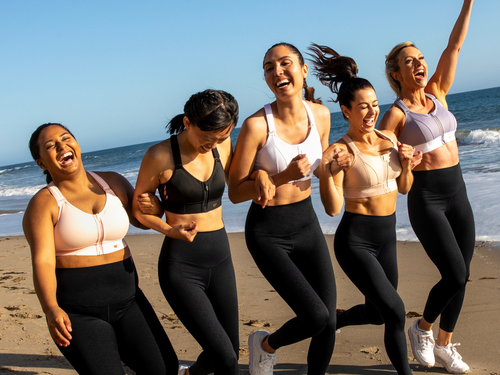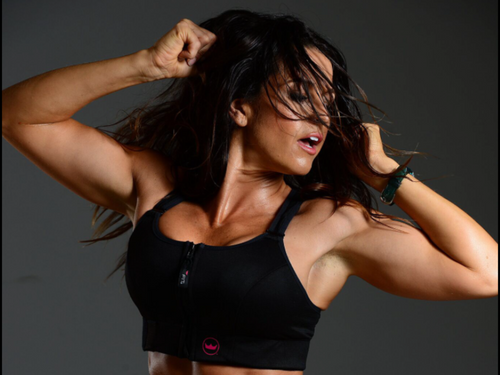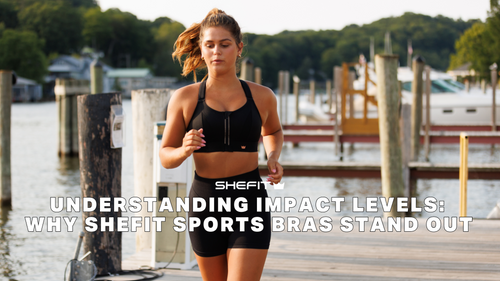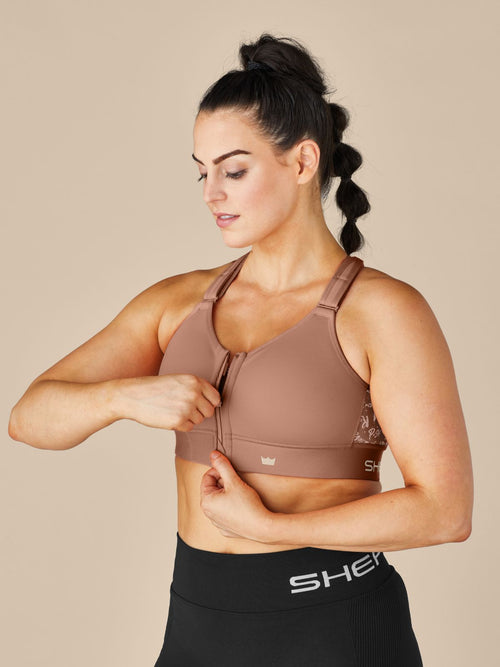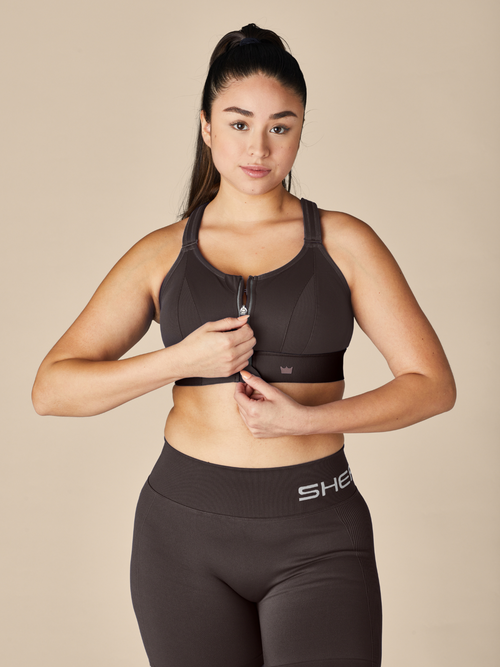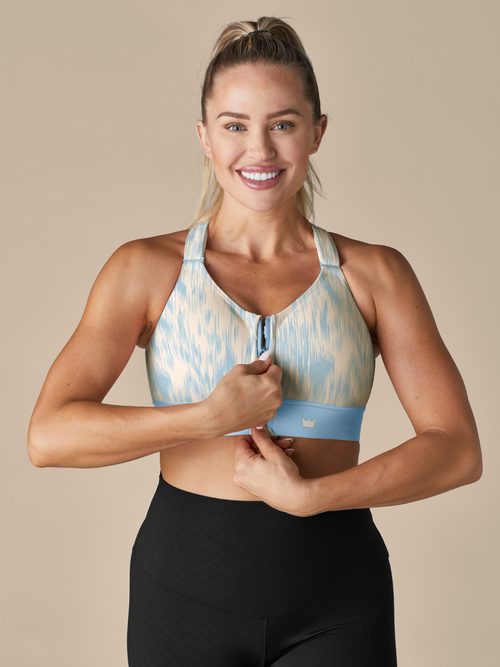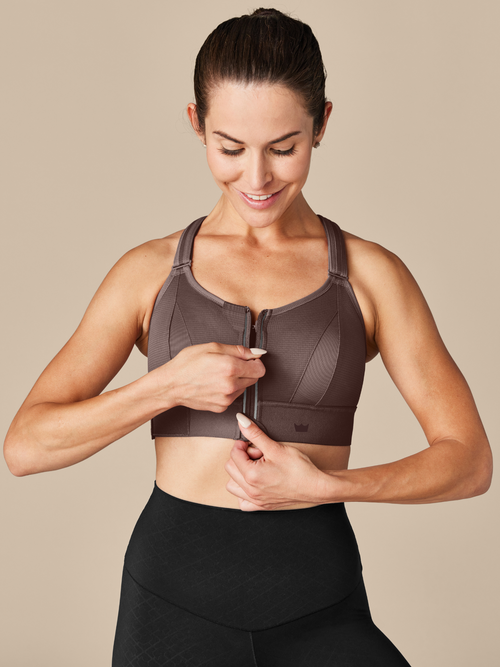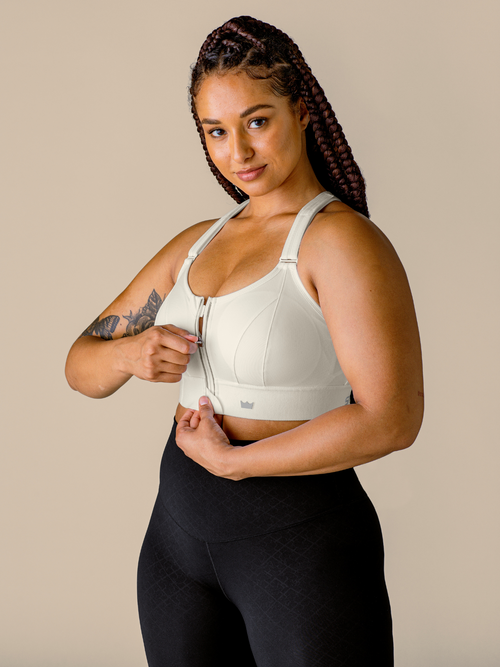Should A Nursing Bra Fit Tightly? 4 Signs It's Too Tight
You’ve just achieved the greatest wonder of womanhood, giving birth. Now comes another equally exciting time, and that’s breastfeeding. You need the right bra for the job but aren't sure about the fit, so you wonder, should a nursing bra fit tightly?
A breastfeeding or nursing bra should fit firmly, keeping your breasts in the cups, but never tightly. If the bra fits tightly, this can cut down on your milk supply. A breastfeeding bra is the best type of bra for women beginning their breastfeeding journey, but it's important to get the right fit.
You probably have a lot of questions about nursing bras, especially if this is your first child. Below, you'll find more information on how to tell if your bra fits correctly, so you know it's not too tight, followed by other nursing bra tips and advice to help you navigate a confusing but rewarding time.
4 Ways to Tell Your Nursing Bra Fits Correctly
Navigating all these different pregnancies and postpartum bras can admittedly be challenging. Besides sports bras, you may have never bought a bra without an underwire in your life. So maybe you have no idea how a nursing bra should fit you.
How tight is too tight, or should it not be tight at all? A nursing bra should be tight but not overly tight. Easy right? Perhaps not, but here are four easy signs that can tell you if your bra fits correctly.
1. Your Breasts Fit in the Cups and Do Not Spill
If your breasts are barely filling out the cups, then your breastfeeding bra is too large. Cup spillage is a clear indicator that you need to go up a size or two. The right nursing bra will contain your new breast size without any kind of unflattering side or front spillage.
2. The Fabric Doesn’t Wrinkle
Wrinkles in your nursing bra mean you bought a bra that’s too big. While a nursing bra that fits right will not have these wrinkles, the same is also true if your bra is very tight. That doesn’t mean a tight bra is the right idea though.
3. The Band Sits Straight
Hold up a hand mirror, stand in front of a large mirror, and look at your reflection to see your back in the nursing bra. The ideal band fit is straight across the back. If you pull on the band, it should be taut but not so tight that you can barely hook a finger underneath.
Be sure to watch how your nursing bra band moves throughout the day. If you can feel it gradually riding up, you need a new bra.
4. The Straps Sit Firmly on the Shoulders
Breastfeeding bra straps are not all that different from traditional bra straps. They feature adjustable buckles that you can set for a looser or tighter fit.
When you adjust the bra to your liking, the straps should stay on your shoulders without digging. They shouldn’t fall all day. Who has time to keep collecting loose bra straps when you have a new baby to look after? Not you!
What Kind of Bra Should I Wear While Breastfeeding?
As you navigated from the first trimester to the second, you may have ditched your regular bra for a maternity bra. If you're wondering if your maternity bra is still sufficient for breastfeeding, the answer is no. It's time to switch bras yet again. This time, you should wear a nursing bra, also known as a breastfeeding bra.
While breastfeeding, a nursing bra is the best kind of bra to wear, as it allows you to breastfeed without needing to remove your bra at each feeding. The bra cups feature flaps that make it easy to pull your nipple out so the baby can feed, the primary advantage over maternity bras.
A breastfeeding bra will always feature some type of panel or clasp that easily allows you to expose your nipple. Maternity bras don’t need the same feature since you’re still pregnant when wearing that style of bra.
If there is one thing that maternity and nursing bras have in common, it’s comfort. While a breastfeeding bra never leaves you unsupported, it lacks a painful underwire that can dig into your still-swollen breasts. The materials have a lot of stretch and flexibility too.
After all, even though you’ve given birth, your body is still changing. You’ll begin losing weight with time, and after you stop breastfeeding, your breast size can shrink to about where it was before your pregnancy.
A nursing bra will be ready for these changes until you can eventually fit into your regular bra again.
Breastfeeding bras are also breathable. As a new mom, you’ll be running around the house constantly, working up a sweat. You need a bra that doesn’t trap moisture and could cause rashes and acne.
Do Nursing Bras Affect Milk Supply?
You’ve heard horror stories from girlfriends who claim the size of their nursing bra can reduce their milk supply. Is that true?
Nursing bras can affect milk supply if they are too tight, which decreases milk supply. A tight nursing bra is also prone to developing mastitis or plugged milk ducts, creating pain, swelling, and an uncomfortable sensation of warmth.
Let’s unpack that a little bit since we did just throw a lot of information at you at once.
Mastitis is breast tissue inflammation. If bacteria get into the breast or your milk ducts get blocked up, then this painful swelling is likely to occur. Besides pain and swelling, your breasts may feel very warm, and you could come down with chills or a fever.
Since it’s often caused by infection, you will need to see your doctor if you think you have mastitis. An antibiotic can treat it while OTC painkillers will help you continue your motherly duties.
Besides the obvious reduction in your milk production, other signs that you need a looser nursing bra are indentations and marks left from wearing the bra, spillage, and discomfort, as covered earlier in this article.
Should I Sleep with a Bra on While Breastfeeding?
As much as you wish your newborn would sleep throughout the night, you’re not quite there yet.
Since you’re waking up at all hours to breastfeed, change diapers, and soothe your baby back to dreamland, you’re wondering if it would just be more convenient to sleep in your nursing bra.
Sleeping in a bra while breastfeeding ultimately comes down to each woman's personal preference and comfort levels. The risks include discomfort from straps and buckles, trapping moisture against the skin. The upsides include reduced breast movement which could improve comfort.
That's right, the consensus is that it’s down to each women’s personal preference and comfort levels.
The Downside of Sleeping in a Bra While Breastfeeding
Even though your breastfeeding bra is sans underwire, it still has straps and buckles that can be uncomfortable to sleep on. As a new mom, you need whatever paltry sleep you can get, so you should be comfortable in bed.
There are more risks still of sleeping in a bra, such as the potential for sweat to get trapped within the bra and cause skin irritation and rashes. Your bra could even turn moldy if it’s sweaty enough.
Keeping all that in mind, there are upsides to sleeping in a nursing bra as well.
The Upside of Sleeping in a Bra While Breastfeeding
The bra will reduce breast movement and provide support throughout the night. With your breasts in such a tender, swollen state, you could have fewer painful nights.
Here’s what we recommend: try it!
If you like sleeping in a nursing bra, it will only be for the next few months, so there isn’t much harm.
If you find that the bra is too uncomfortable for any quality shuteye, then wear a tank top or chemise to bed so you can easily access your breasts to feed your baby.
You could always pump milk before bed, so you don’t even have to breastfeed when you’re bleary-eyed and half-asleep!
Our Best Tip for Breastfeeding Bras? Comfort Trumps Everything
As a new mother, it’s easy to throw all your needs on the back burner for your new baby.
When it comes to your bra though, this is one area you have to pay more attention to. A breastfeeding bra makes nursing easy and will support your swollen breasts so you’re not in agonizing pain.
Your nursing bra may not be the exact same size as your regular bra, and that’s okay!
If your breasts stay in the cups, the band doesn’t ride, and the straps don’t dig into your shoulders, then your bra is tight enough for support but not so tight that you’ll restrict your milk supply.


